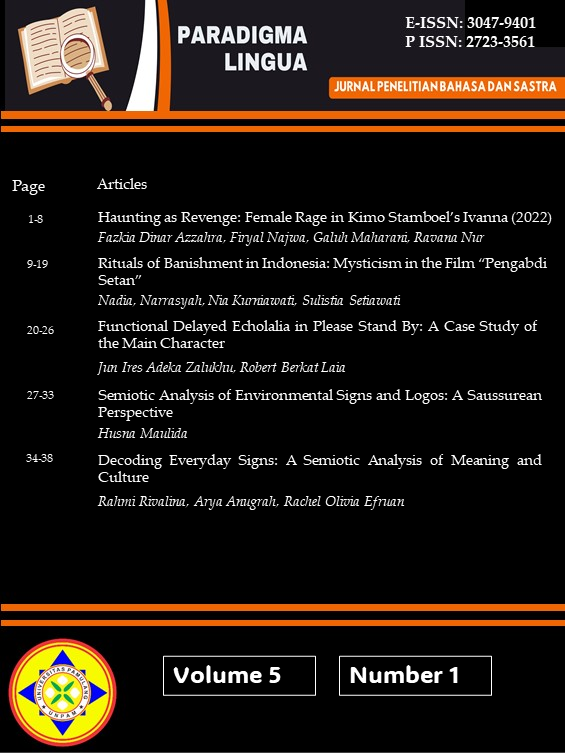Semiotic Analysis of Environmental Signs and Logos: A Saussurean Perspective
Abstract
This study investigates the semiotics of environmental signs and logos through the lens of Ferdinand de Saussure’s semiotic framework, focusing on the interplay between the signifier and the signified. The research employs a qualitative methodology, analyzing the visual and contextual elements of various environmental signs, including traffic symbols, warning signs, and commercial logos. Findings reveal that universally recognized symbols and culturally specific norms significantly enhance the effectiveness of environmental communication. The study underscores the importance of designing contextually relevant signs that resonate with cultural expectations, ensuring clarity and functionality. Additionally, the research highlights the role of logos in branding and identity, emphasizing their contribution to public space dynamics and consumer perception. These insights contribute to a broader understanding of how semiotics facilitates communication and organization in public spaces.
References
Chandler, D. (2007). Semiotics: The Basics (2nd ed.). New York: Routledge.
Creswell, J. W. (2014). Research Design: Qualitative, Quantitative, and Mixed Methods Approaches (4th ed.). Thousand Oaks: Sage Publications.
Maran, T., & Kull, K. (2014). Ecosemiotics: Main principles and current developments. Geografiska Annaler: Series B, Human Geography, 96(1), 41-50.
Saussure, F. de. (2011). Course in General Linguistics (W. Baskin, Trans.). Columbia University Press.
Vallverdu-Gordi, M., & Marine-Rigau, R. (2023). The role of graphic design semiotics in environmental awareness campaigns. International Journal of Environmental Research and Public Health, 20(5), 4299.
Sebeok, T. A. (2001). Signs: An Introduction to Semiotics (2nd ed.). University of Toronto Press.
Downloads
Published
Issue
Section
License
Authors who publish with this journal agree to the following terms:
- Authors retain copyright and grant the journal right of first publication with the work simultaneously licensed under a Creative Commons Attribution License that allows others to share the work with an acknowledgement of the work's authorship and initial publication in this journal.
- Authors are able to enter into separate, additional contractual arrangements for the non-exclusive distribution of the journal's published version of the work (e.g., post it to an institutional repository or publish it in a book), with an acknowledgement of its initial publication in this journal.
- Authors are permitted and encouraged to post their work online (e.g., in institutional repositories or on their website) prior to and during the submission process, as it can lead to productive exchanges, as well as earlier and greater citation of published work (See The Effect of Open Access).
Paradigma Lingua have CC-BY-SA or an equivalent license as the optimal license for the publication, distribution, use, and reuse of scholarly work.
In developing strategy and setting priorities, Paradigma Lingua recognize that free access is better than priced access, libre access is better than free access, and libre under CC-BY-SA or the equivalent is better than libre under more restrictive open licenses. We should achieve what we can when we can. We should not delay achieving free in order to achieve libre, and we should not stop with free when we can achieve libre.


